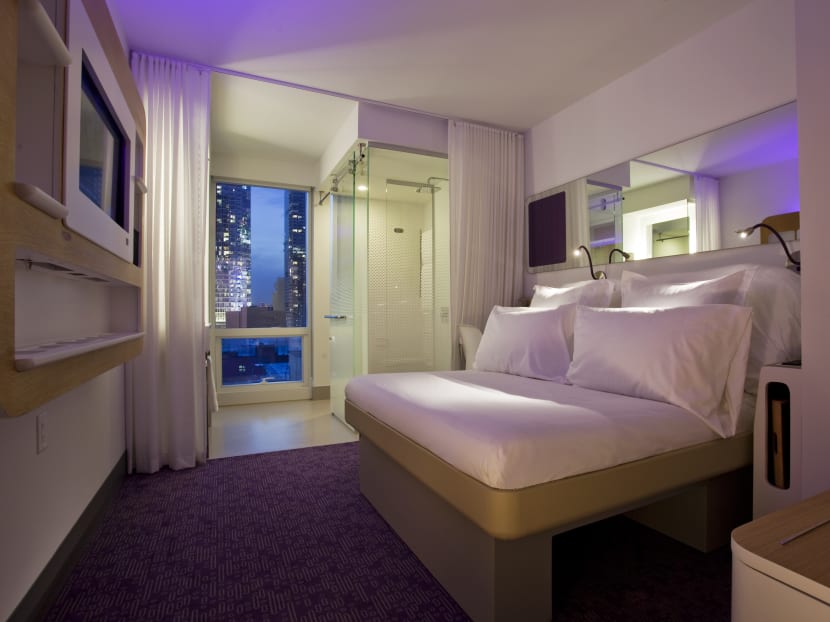Micro-hotel Yotel plans first Asian property in S’pore
SINGAPORE — The micro-hotel, a concept that first gained traction in Europe with brands like Yotel and CitizenM at airports and in urban centres, is becoming more popular with travellers.

A New York YOTEL interior image. Photo: YOTEL
SINGAPORE — The micro-hotel, a concept that first gained traction in Europe with brands like Yotel and CitizenM at airports and in urban centres, is becoming more popular with travellers.
Yotel, which opened its first micro-hotel in London’s Gatwick Airport in 2007 and has others in Amsterdam and New York City, plans to expand in Singapore and Geneva, as well as in San Francisco, Boston and Miami.
Yotel, whose rooms at its New York City property are about 170 sq ft each, is expected to open its first flagship property in Asia next year with the launch of Yotel Singapore in Orchard Road. The 610-room hotel, to be located next to the Thai Embassy, is looking to charge S$200 to S$240 a night, its general manager Brendan Daly was reported by travel industry portal TTG as saying. This will be followed by another micro-hotel in Changi Airport the following year.
“Disruptions from short-term rentals are creating a whole new supply channel,” said Mr Scott Berman, principal in the hospitality and leisure division at PricewaterhouseCoopers.
As hotels seek to blunt the appeal of accommodation portal Airbnb and court younger and more independent travellers, some are choosing to go the micro-hotel way. These micro-hotels blend elements from cruise ships and hostels and are characterised by compact guest rooms, an embrace of technology and an oversized communal lounge.
It is not just specialty chains that are drawn to the concept. Lured by the profit potential of squeezing more rooms into the same amount of space, and possibly reducing the overall cost of construction, larger chains are also planning micro-hotel projects.
Hilton Hotels & Resorts is introducing Tru, which will have an average room size of 225 sq ft, compared with the typical room size of about 350 sq ft at Hampton Inn, which is owned by Hilton. Marriott International, which introduced Moxy in Milan, is creating a guest room in the United States that is expected to be about 180 sq ft. A room at a Courtyard by Marriott, by contrast, is about 300 sq ft.
“There’s a higher acceptance of the small rooms,” said Mr Mark van Stekelenburg, a managing director at CBRE Hotels. He said that guests saw value if the hotel offered significant amenities.
Technology is a big draw, especially when deployed in creative ways. Yotel, for example, dispensed with bellhops in its New York micro-hotel, relying instead on a robotic arm to store and retrieve luggage.
At CitizenM, a tablet computer controls the blinds and turns on the lights and the television. Moxy uses motion sensors to light the way into the private bathroom.
For working, Hilton anticipates having private spaces and built-in alcoves instead of traditional business centres.
“There’s much less labour than in a traditional hotel,” said Ms Stephani Robson, a senior lecturer at the Cornell University School of Hotel Administration.
The focal point of these microhotels is their oversized common areas with sections for working, eating, drinking and playing. A recreation area might include a chess set or a foosball table.
“Travellers want friends and guests to meet them there and feel good about it,” said Mr Hubert Viriot, chief executive of Yotel. AGENCIES





